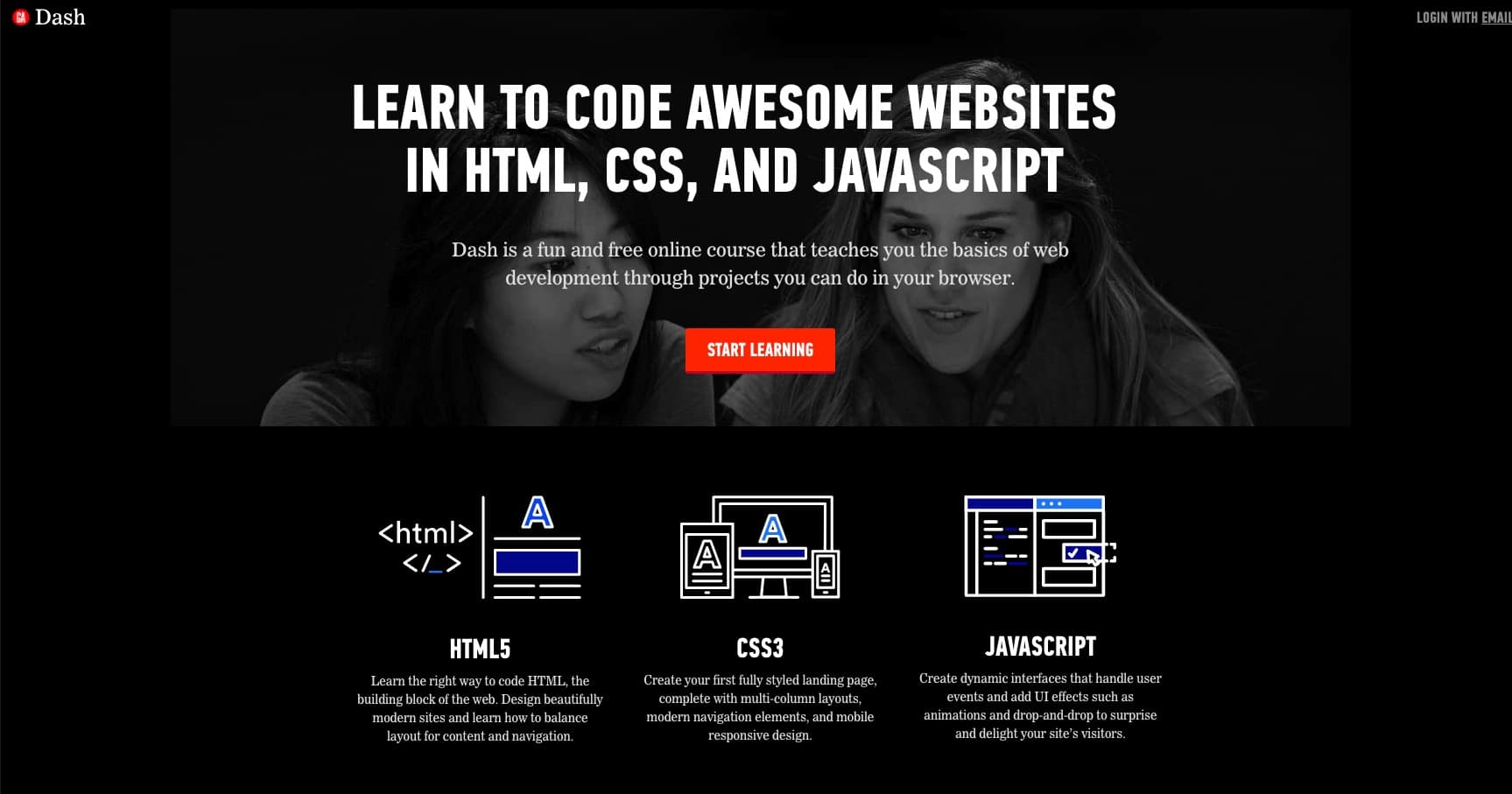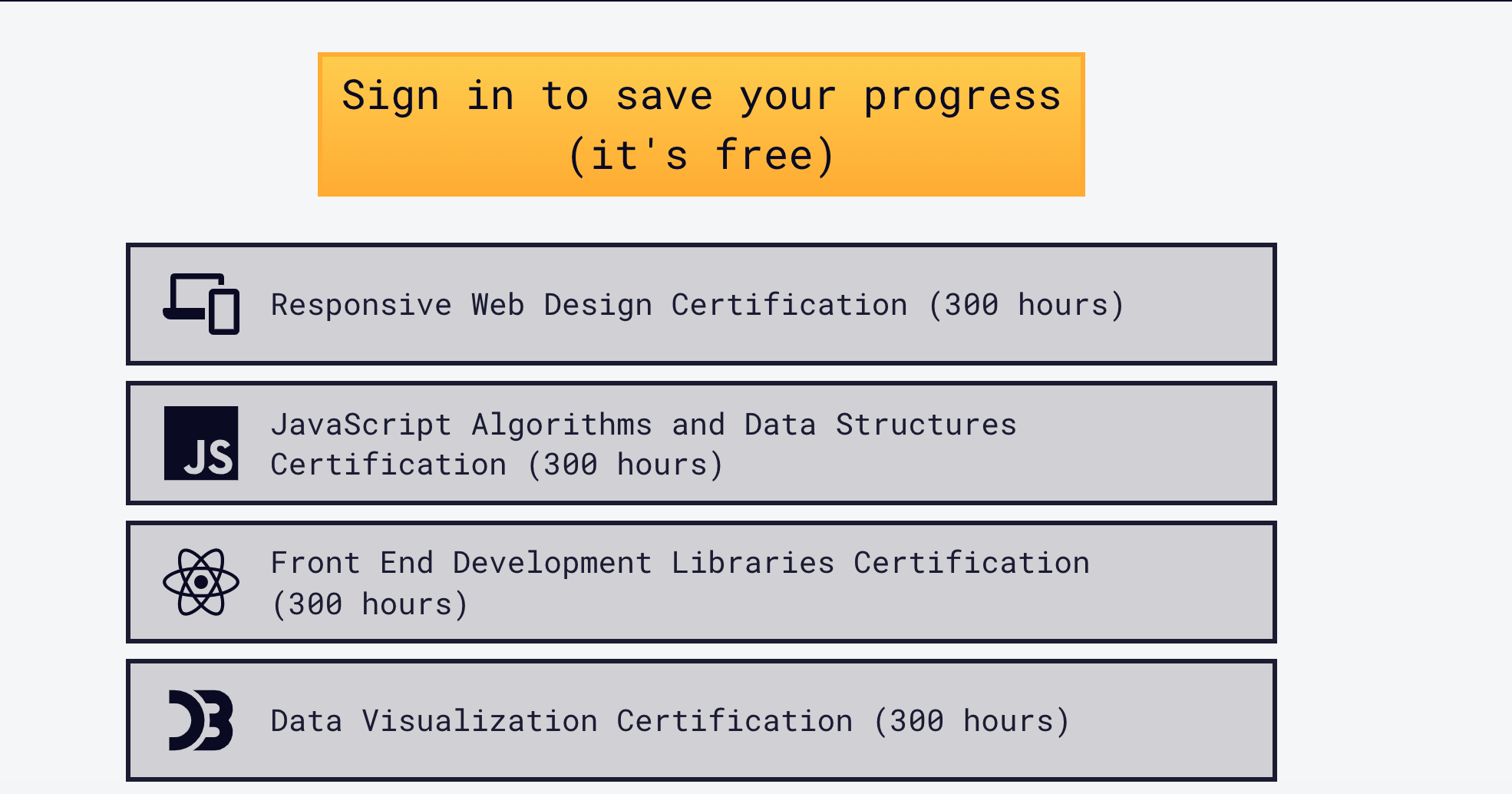Discover a comprehensive free web design and development course that covers all the essentials. Master the skills needed for creating modern, responsive websites.
Web design and development is an ever-evolving field that combines creativity with technical skills to build and maintain websites and applications. A full course in web design and development usually offers extensive knowledge on HTML, CSS, JavaScript, and various frameworks that are essential for front-end and back-end development.
Such courses aim to equip individuals with the tools to create visually appealing and user-friendly interfaces, ensure cross-browser compatibility, and implement responsive design. As online presence becomes increasingly vital for businesses and individuals alike, acquiring skills in web design and development can open numerous career opportunities. With the availability of free courses, beginners can access quality education and advance their knowledge without financial barriers, all while staying equipped for the competitive digital landscape.

Credit: thehotskills.com
Starting Your Web Design Journey
Embarking on the path to becoming a web designer is exciting. A world of creativity and technical skills awaits you. Let's explore the essentials for your toolkit and knowledge.
Choosing The Right Tools
Selecting the tools that suit your workflow is vital. Start with fundamentals:
- Text Editor: Choose from Sublime Text, Atom, or Visual Studio Code.
- Graphics Software: Adobe Photoshop and Sketch are popular choices.
- Prototyping Tools: Adobe XD and Figma help with interactive design.
Familiarize yourself with these to lay a strong foundation.
Essential Design Principles
Good design balances aesthetics and functionality. Key principles include:
| Principle | Description |
|---|---|
| Balance | Use symmetry to create stability on web pages. |
| Contrast | Contrasting colors attract user attention. |
| Unity | Keep a consistent look throughout your design. |
Integrating these principles ensures your design stands out.
Understanding User Experience
Your website's success hinges on user experience (UX). Users should find your site easy and pleasant to use. Key UX considerations:
- Navigation: It must be intuitive.
- Responsiveness: Sites should look good on all devices.
- Speed: Pages should load quickly.
Keep user needs at the forefront to ensure a seamless experience.
Mastering Html: The Building Blocks
Embark on your journey in web development with the cornerstone of any website: HTML. Understanding HTML is essential for creating web content that is both functional and engaging. Dive into the world of HTML tags, learn how to structure your web pages precisely, and embrace the modern practices introduced by HTML5. It's time to lay a strong foundation for your web design and development skills.
Basic Html Tags
HTML tags are the alphabet of web design. Knowing these tags is like knowing your ABCs. Let's explore some basic, yet powerful tags:
to
- Headings from most to least important
- Paragraphs
- - Links
- Images
- and
- - Unordered and ordered lists
- - Divides your page into sections
Using these tags helps web browsers understand and display your content.
Structuring Web Pages
A well-structured web page keeps your content organized and accessible. Use HTML containers to define parts of your page:
| Container | Use |
|---|---|
| Top of the page | |
| Navigation bar | |
| Main content area | |
| Bottom of the page | |
| Segments within main | |
| Articles or blog posts |
Structure leads to better SEO, as search engines recognize and prioritize well-structured content.
Html5: Modern Practices
HTML5 brings richer content and better user experiences. Embrace these key elements:
- Semantic tags like
, , and - Form controls with types such as 'email' and 'date' streamline user input.
- Interactive elements with and
create expandable content.
,
Adopting HTML5 standards ensures your websites stay current and user-friendly.
Styling With Css: Bringing Designs To Life
Imagine building a house. Now, think of HTML as the structure and CSS as the paint, flooring, and decorations. CSS, or Cascading Style Sheets, gives websites their unique look and feel. It's what makes buttons eye-catching and layouts stunning. Ready to dive into making web designs pop? Let's jump straight into the colorful world of CSS styling!
Css Syntax And Selectors
CSS syntax is easy to understand. It works like this: You select an element and then decide how it should look.
| Selector | { | Property | : | Value | ; | } |
|---|---|---|---|---|---|---|
p |
{ | color |
: | red |
; | } |
This code turns all paragraph text red. Simple, right?
Responsive Design Techniques
Websites must look good on any device. Responsive design ensures this.
- Media queries let CSS apply only if certain conditions are met.
- Flexible grids scale your layout with the screen size.
- Flexible images work with grids to size appropriately.
These techniques help sites adapt, always providing a smooth user experience.
@media (max-width: 600px) { .container { width: 100%; } }
Frameworks And Preprocessors
Frameworks like Bootstrap and Tailwind offer pre-made styles. They're like a toolkit for building with speed and consistency.
- Frameworks offer components for quick design.
- They make sites look good with less code.
- Preprocessors like Sass can speed up CSS coding.
With preprocessors, you can use variables and functions in your CSS, taking your styles to the next level.
.btn-primary { background-color: $primary-color; }
Interactive Websites With Javascript
Imagine a website that not only looks good but also reacts to you. That's the magic of JavaScript. This powerful language turns static pages into interactive experiences. Our full course in web design and development covers it all, and today's focus is creating interactive websites with JavaScript.
Javascript Basics
Before making websites interactive, you need to understand JavaScript basics. Let's dive into the fundamentals:
- Variables: These are like storage boxes for information.
- Functions: Think of these as machines in a factory. They take some input and give back an output.
- Events: These are actions like clicks or keystrokes that JavaScript can respond to.
- Conditions: These are like crossroads that decide which way the code will go next.
Dom Manipulation
Next, we explore DOM Manipulation, where JavaScript talks to HTML. It's like giving orders to your website elements.
- Select elements:
document.querySelector() - Change content:
element.textContentorelement.innerHTML - Create or remove elements:
document.createElement()orelement.remove() - React to user actions:
element.addEventListener()
Libraries And Frameworks
JavaScript has buddies called libraries and frameworks. These tools help build websites faster. Some popular ones are:
| Name | Use |
|---|---|
| jQuery | Makes DOM manipulation easier |
| React | Builds user interfaces with components |
| Vue.js | Creates interactive UIs |
| Angular | Powers dynamic web applications |
By mastering JavaScript basics, DOM manipulation, and using libraries and frameworks, you're well on your way to creating websites that not only look great but also engage and respond to users.
Backend Basics: Server-side Development
The journey into the core of web development starts with back-end basics. Understand how server-side development dictates what happens behind the scenes. This section delves deep into back-end fundamentals, explaining the pillars of a robust web application.
Understanding Web Servers
Web servers are the heartbeats of the internet. They process user requests and serve content. Learn key server functionalities and their role in web development.
- HTTP Protocol: The foundational rulebook for server-client communication.
- Hosting: Where websites live and breathe on the internet.
- Server Software: Crucial tools such as Apache and Nginx that power server operations.
Introduction To Databases
Storage is crucial for any web application. Data needs a home, and databases provide just that. Explore how databases interact with web servers to deliver dynamic content.
| Type | Description |
|---|---|
| SQL | Structured databases with predefined schema. |
| NoSQL | Flexible databases with dynamic schemas. |
Server-side Languages And Frameworks
Bringing the server to life requires languages and frameworks. These powerful tools build the logic that controls websites. Explore popular languages and the frameworks that enhance their capabilities.
- PHP: A veteran language synonymous with server-side scripting.
- Node.js: JavaScript's reach extended to the server.
- Python: Known for readability and broad use in web development.
- Frameworks: Django, Express.js, and Ruby on Rails. They speed up development and improve code quality.

Credit: kinsta.com
Launching Your Website
Continuous Learning And Resources
The journey through web design and development never truly ends. As technologies evolve and new frameworks emerge, professionals must embrace continuous improvement to remain relevant in the field. Let's explore the vast expanse of resources available for ongoing education and growth.
Online Communities And Forums
Online communities and forums burst with knowledge, tips, and real-world advice. Active participation in these platforms can greatly enhance your learning experience. Here's where you can engage:
- Stack Overflow: Ideal for tackling coding issues.
- GitHub: Collaborate and review code from peers.
- Reddit’s webdev subreddit: A hub for web development discussions.
Further Education And Certifications
Formal education and certifications can demonstrate expertise and dedication. They can open doors to new job opportunities. Consider these credible options:
| Certification | Provider |
|---|---|
| Google UX Design Certificate | Coursera |
| Front-End Web Developer | edX |
Staying Up-to-date With Tech Trends
Tech industry moves fast. Stay informed on the latest trends to maintain a competitive edge. Read tech blogs, subscribe to industry newsletters, and follow influencers for insights. Notable sources include:
- TechCrunch: For the latest in tech and startups.
- Smashing Magazine: For web design and development trends.
- CSS-Tricks: For in-depth CSS guides and tips.

Credit: www.freecodecamp.org
Frequently Asked Questions For Free Web Design & Development Full Course
How Can I Learn Web Design For Free?
To learn web design for free, explore online platforms such as Codecademy, Coursera, and FreeCodeCamp. Utilize free tutorials on YouTube, and practice with tools like W3Schools and the Mozilla Developer Network. Join web design community forums for peer support and knowledge sharing.
Which Is The Best Free Course For Web Development?
The best free web development course is "Codecademy's Web Development Path," offering comprehensive lessons on HTML, CSS, and JavaScript.
Can I Learn Web Design On My Own?
Yes, you can learn web design on your own using online tutorials, courses, and practice. Resources like Codecademy, Udemy, and freeCodeCamp provide comprehensive learning tools. Dedication and hands-on project work are key to mastering web design skills.
What Is The Best Website To Learn Web Development?
The best website for learning web development is subjective, but Codecademy, freeCodeCamp, and W3Schools are highly recommended for beginners and professionals alike.
Conclusion
Embarking on your web design and development journey need not come with a hefty price tag. This full course, available at no cost, equips you with essential skills and know-how. By taking advantage of these comprehensive resources, your pathway to becoming a proficient designer and developer is clear.
Unlock the potential within, and start creating your digital masterpieces today.
0 Comments